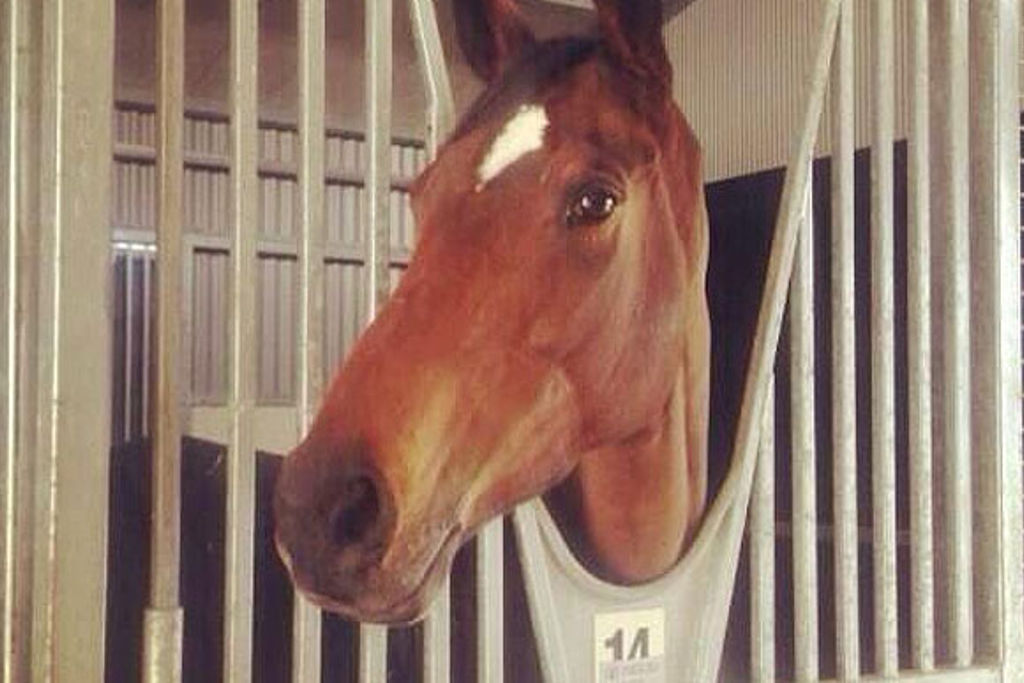Here Are Some Facts About Horseracing In Australia!
One horse has died after this year's Melbourne Cup. Here's a re-post from last time this happened.

This article was first published on November 6, 2013 — the day after French mare Verema was euthanised, after snapping her cannon bone midway through the Melbourne Cup.
It was then re-posted on November 4, 2014 — the day two horses died after running the same race. Admire Rakti, a frontrunner, collapsed and died at the stalls after staggering to last place in the Melbourne Cup; a second horse, Araldo, was frightened after the race by a child waving a flag from the crowd; he shied up and broke a pastern in his right hind leg, and was later euthanised.
In 2015, fan-favourite Red Cadeaux was put down after breaking a leg during the race.
Today, during the 2018 Melbourne Cup, the racehorse Cliffsofmoher was injured 600 metres into the race, breaking down with a leg injury. Shortly afterwards, a tarp was put up around the injured horse on the track, and the horse was euthanised.
We’re hearing The Cliffsofmoher suffered a fractured right shoulder and was euthanised in track. More to come once we have further info.#melbournecup2018
— RSPCA Australia (@RSPCA) November 6, 2018
–
“There seems to be a massive contradiction between the way the racing industry says they love their horses, and how the horses are actually treated,” explains Ward Young, narrator of Wastage. The documentary was put together by the Coalition for the Protection of Racehorses in 2012, and seems particularly pertinent today. “It’s clear that they are simply an investment, and when they can no longer return a profit, they are discarded. They become wastage.”
Warning: the short film below contains extremely graphic images, including a scene of horses being shot directly in the head in front of other horses.
–
Here are some facts:
* According to the Coalition for the Protection of Racehorses, 18,000 horses are bred for racing each year. At any one time, around 31,000 thoroughbreds are ‘in training’ in Australia.
* BUT: according to Animals Australia, 15,000 Australian racehorses are sent to the slaughterhouse each year for being too slow or too ill or too old. A 1995 study estimated only 300 in every 1000 of thoroughbred foals born in Australia were profitable enough to actually race.
* During the years they spend in training, racehorses are stabled for most of the day, encouraging aggressive behaviour and in some cases self-mutilation. They are fed high concentrate diets which often leads to gastric ulcers; a 2000 study of racehorses in Randwick found that 89% had stomach ulcers.
* Section 9 of Victoria’s Prevention of Cruelty to Animals Act states that “a person who overrides, overdrives, overworks, abuses, beats, worries, torments or terrifies an animal; commits an act of cruelty”.
* As we saw yesterday, racing is dangerous. If a horse breaks a leg or shoulder, the complex network of bones can shatter, making them almost impossible for a vet to repair; this, coupled with the inability of horses to lie down for extended periods (they sleep standing), makes it difficult for them to recover. This is why they are put down.
* Animals Australia have a ‘Pledge To Never Bet On Cruelty‘.
–
FURTHER READING
‘Horse Racing: The Glitz, The Glamour… The Grim Reality‘, published by Animals Australia
‘The Brutal Truth About The Horse Racing Industry‘, by Ward Young for The Punch, November 2010
‘The Melbourne Cup: It’s A Truly Revolting Spectacle‘, by Marieke Hardy for the ABC, November 2010
‘There Are No Winners: Horse Racing Is Unethical‘, by César Albarran Torres and Peter Chen for The Drum, June 2012
–
Image via Twitter.